Search Blog
Your Blog Roll
Signup to get the latest News & Resources
Connect with us
Posted by Peter Hunt in General on November 8th, 2017

If you regularly suffer from facial pain, noisy clicking when yawning or eating, headaches, tinnitus or neck pain, you could be suffering from TMJ or jaw dysfunction. And, while accidents can be to blame for your jaw pain, TMJ issues are often caused by your lifestyle (we’re looking at you, slouchy). But don’t fret, dental and physiotherapy intervention can get things moving smoothly again!
TMJ stands for temporomandibular joint, which is just a wordy way of saying jaw joint. According to Collins Place Physio’s Peter Bond, “our TMJs allow the jaw to be suspended under the skull. Each joint is the junction of two bones, a hollow in the under-surface of the side skull bone and a rounded prominence at the top of the jaw bone or mandible. Like all joints, these two bones move on each other and have cartilage bonded onto their joint surfaces and are held together and encapsulated by fibrous tissue. In the case of each TMJ, a cartilage disc between these joint surfaces allows a better fit and a range and variety of movement.”
“Dysfunction of the TMJ is the perception that there is some inability to perform in its normal way,” says Peter. “The TMJ works in conjunction with many other body parts, including the TMJ of the opposite side. It is important to recognise this fact, as involvement of a team of health professionals is often required to address the various issues concerning a patient’s jaw dysfunction.”
Not all ear aches are due to infection, and discomfort in this region can often be jaw related, due to the TMJ’s positioning. “Each TMJ is located immediately in front of the ear which explains symptoms often mentioned such as a blocked ear, ear ache or pain and noises when moving the jaw which are not heard by others,” says Peter.
“Other symptoms which are often described are headache, tinnitus or ringing in the ears, pain which occurs in the region of the TMJ, altered sensation in the teeth, neck pain and joint noises such as popping, clicking and grating.”
According to Peter, causes of problems of the TMJ and associated structures include:
A physiotherapist who has undergone extra study in TMJ dysfunction, such as Peter Bond, can give advice on usage of the jaw, and improve joint movement and muscle function via techniques such as mobilisation, muscle massage, gentle stretching if found to be shortened, strengthening if found to be weak, the application of heat and or ice, dry needling, and attending to a patient’s posture. “It is important to realise that with these conditions the physiotherapist is part of a team and that the skill of each team member needs to be utilised for maximum patient outcome,” adds Peter.
Make an appointment with Peter and address your jaw pain today!
Posted by Peter Hunt in General on October 24th, 2017

It’s that time of year again, when we frock and suit up and head to the track to check out the competition, and maybe even back a winner or two! The Spring Racing Carnival is one of the highlights of the Melbourne calendar, but it can leave you feeling rather sore and sorry for yourself after the last horse has passed the post.
So, to help you survive a long day – or days – at the track, our team have put together some handy tips to make it across the finish line intact. Let’s make this year’s carnival all gain, no pain!
You’ll be doing a lot of standing, so give the stilettos a miss, says CPP Physio, Jane Lau. “High stilettos increase pressure on knee joints and also the lower back. They also shorten the calf muscles which could lead to cramps and strain.”
Wedges are a much better option, she adds. “Not only will these keep you from sinking into the grass, but they offer more support and your feet will thank you the next day. Make sure you choose a wedge with a back strap to hold the foot in place so you are not clawing with your toes to keep your shoes on.”
While thongs might not be the best look for race day, they’re a heck of a lot better for your feet – and your pride – than kicking off your heels altogether once the pain sets in!
But not just any thongs will do, says Collins Place Physio Director, Pete Hunt. He recommends you throw a pair of Archies Thongs in your oversized clutch. These physio-developed thongs have built in arch support and supportive straps to keep your feet comfy and pain-free.
It’s a long day at the races, but try to maintain good posture throughout. According to Jane, “Good posture is important because it is the position in which your muscles are working most efficiently and the least amount of strain is placed on muscles, ligaments and joints.” Meaning you’ll be in much better working order the days following the Cup.
If that’s not compelling enough, consider this. The other benefit of correct posture is that it gives you an appearance of confidence, and evens shaves inches off the waist. Meaning your expensive new dress or suit will look even better!
To stand/ sit tall Jane recommends the following: “Imagine a string pulling the top of your head towards the ceiling. Tuck your chin in and draw your shoulder blades towards the opposite hip like the letter ‘X’.”
Physio Conor Brennan recommends preparing for race days by doing the following stretch. “This is a stretch for your calf and achilles. These muscles start to shorten when wearing heels on a regular basis. This leads to reduced ankle mobility which will place increased load on the joints and muscles around it and can lead to injury.”
He also recommends this core activation exercise, which will help with standing tall for hours. “This exercise will help you to isolate and activate your core muscles to stabilise your spine while you move your extremities.”
Conor adds, “Some people can experience some low back ache when standing all day. A good tip, especially for the ladies in heels, is to tilt your pelvis backwards, as if you are tucking your tailbone underneath you. This helps to activate your core muscles and take the pressure off your lumbar spine.”
“A day of frivolity at the track eating, drinking and, for the fine fillies, standing in heels, can leave your lymphatic system sluggish, causing dehydration and muscle tightness, most noticeably in your legs. A massage will assist in slowing down an overtaxed nervous system, supporting the lymphatic system to flush toxins and move fluid back to sore, dehydrated muscles. I do advise drinking water before and after treatment to assist the process,” says CPP Remedial Massage Therapist, Mariana Stamatopoulos.
Remember to slip, slop, slap, don’t bet more than you can afford, and keep up the water intake. And most importantly, enjoy your day (or week) at the races!
Image Credit: By Chris Phutully from Australia [CC BY 2.0 (http://creativecommons.org/licenses/by/2.0)], via Wikimedia Commons
Posted by Peter Hunt in General on September 29th, 2017

The feet are a commonly neglected area of the body, and as a result we see a wide range of foot concerns at Collins Place Physio. Healthy feet are crucial to keep us mobile, which is why we’re such big fans of the work of podiatrist turned shoe designer Anna Baird and the team at Bared Footwear! Bared shoes pair fashion with function (seriously! Check them out here) and ALL designs are orthotics-friendly. We sat down with Anna to find out what makes happy feet. So, put your feet up and read on!
The most common foot concerns for women that we see at Bared are: Plantas Fasciitis which usually presents as heel or arch pain, Bunions and the pain associated in the big toe joint, Neuromas which are the thickening of a nerve in the foot which can be very painful, and also lots of corns and calluses that are caused from excess pressure on areas of the feet.
For men, we also see a lot of Plantar Fasciitis and heel pain, but also a lot of flat feet, and also arthritis in certain joints in the foot that is giving them grief.
Foot health and hygiene is extremely important. People often neglect their feet until there is a problem and we often forget that our feet are what make us mobile. The average person will walk more that 128,000 km in their life time, so your feet need a bit of TLC.
People tend to choose their shoes by look first, and there is nothing wrong with that! Just keep in mind the best shoes for you are ones that offer support and protection. Look for shoes that are made from natural materials such as leather, as they are more breathable and your feet will love you for it.
Also shoes that have a stable sole, and some sort of fastening to the foot by laces or straps – your feet shouldn’t have to work hard just to keep a shoe on. Correct fit is also vitally important with a shoe, as we shouldn’t be squeezing our feet into unnatural shapes or positions.
Be aware that your feet are very complex structures that go through a lot of wear and tear on a daily basis. If you notice something doesn’t feel or look right, then see a health professional sooner rather than later.
Wearing high heels puts a lot more pressure on the front of our feet. To reduce this pressure, look for heels that have a wide and stable heel unit (stay away from those stilettos!), and the more structure and fastenings to the foot, the more supportive they will be.
Bared shoes are designed to have all the aspects that we as podiatrists recommend in shoes. All our footbeds/insoles (whether built in in our sandals and heels, or removable in all our other styles) have arch support, heel cushioning and support, a metatarsal dome to offload the forefoot, and a cuboid notch to improve foot function.
Our shoes themselves all have a steel shank from the heel to the ball of the foot for structure, ridged heel counters for support, are made of quality leather uppers, and have some sort of fastening to the foot. They also have enough depth to accommodate most orthotic devices. Our most important difference is that all of these features are hidden in a cool pair of shoes!

Posted by Peter Hunt in General on September 26th, 2017
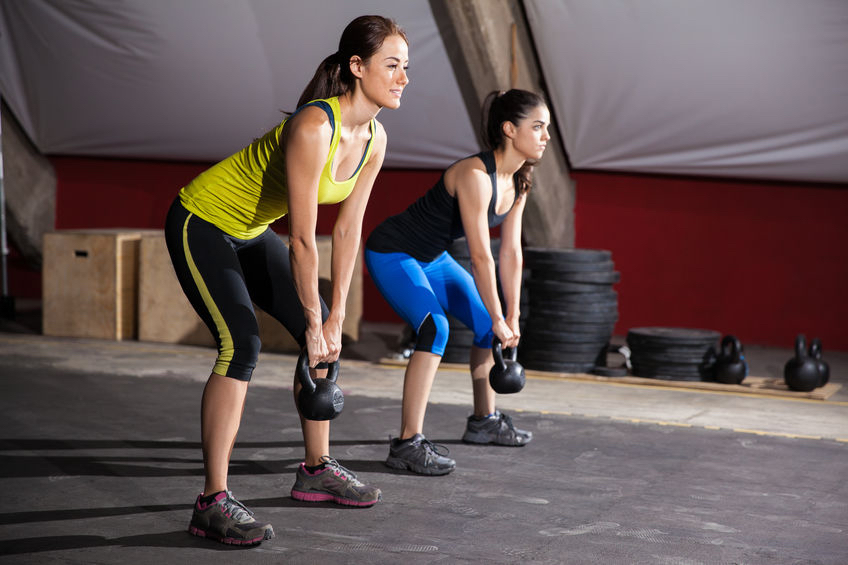
Not just about building bulk, strength training’s popularity is at an all-time high, for both sexes. Not convinced? We picked the brains (and brawn) of City Club PT Jackson Rae to find out 6 compelling reasons you should try strength training today. What have you got to lose?
“Strength training is a type of physical exercise that specialises in the use of resistance to induce muscular contraction which builds strength, anaerobic endurance and increases the size of skeletal muscle,” says Jackson.
Jackson nominates push ups, chin ups, squats, leg press and deadlifts as some of the more common strength training moves. Exercise equipment can include free weights, weight machines and resistance bands, but a lot of work can be done just using your own body weight, too.
Jackson says there is an extensive list of benefits that comes with these kinds of workouts. Here are 6 reasons you should try strength training for yourself.
“Anybody that suffers from diagnosed muscle, bone or joint problems who has been told that participating in resistance training could make them feel worse should not participate in this method of training until further medical advice has been sought,” Jackson advises. “People without these conditions should include resistance training in their lifestyle as it adds many benefits to a person’s wellbeing.”
“For your everyday person I would highly recommend having a cardiovascular routine in conjunction with your resistance program if you are looking to really maximise your training success and overall fitness levels,” says Jackson. However, the amount of cardio he recommends depends on an individual’s goal, whether that might be gaining muscle or losing body fat.
“Too much cardio can inhibit muscle growth,” he says, “so if your goal is to increase your lean muscle mass, then you would do more resistance training than cardio. However, if your goal is to lose body fat, then upping your cardio training in conjunction with your resistance training can accelerate your results and put you in that calorie deficit which can reduce your body fat.”
In a word, no. “Body Builders use specific training techniques to increase their size and their training program is backed up with a very specific nutrition program which can consist of an extremely high amount of calories. Day to day women participating in moderate resistance training 2-3 times a week will experience more strength gains than an actual noticeable size increase in muscle mass,” says Jackson.
It’s important to establish your goals first, says Jackson. “Once you have established this, consult with a fitness professional at your local fitness centre and arrange a pre-exercise screening. Identify any issues that may put you at risk when exercising before attempting to hit the gym floor and start lifting weights.
“If your fitness professional can carry out a basic posture analysis on you then that will be great – this way they can identify any muscular imbalances and start to implement some corrective exercises. It’s very important to pay attention to safety and good form to reduce the risk of injury. Utilise a registered fitness professional to help coach you through your training program until you are confident your technique is as good as it can be.”
“It’s good to be strong and have strength in the muscle, but equally as important is to have length and stay on top of your flexibility training. Stretching after your sessions will reduce the intensity of your delayed onset muscle soreness (also known as DOMS). A well-rounded training program should include the following components: cardiorespiratory endurance, muscular strength, muscular endurance and flexibility training.”
Jackson Rae is a Personal Trainer at City Club (Grand Hyatt)
Please contact him on 0413 551 085 or email to make an appointment.
Posted by Peter Hunt in General on September 13th, 2017
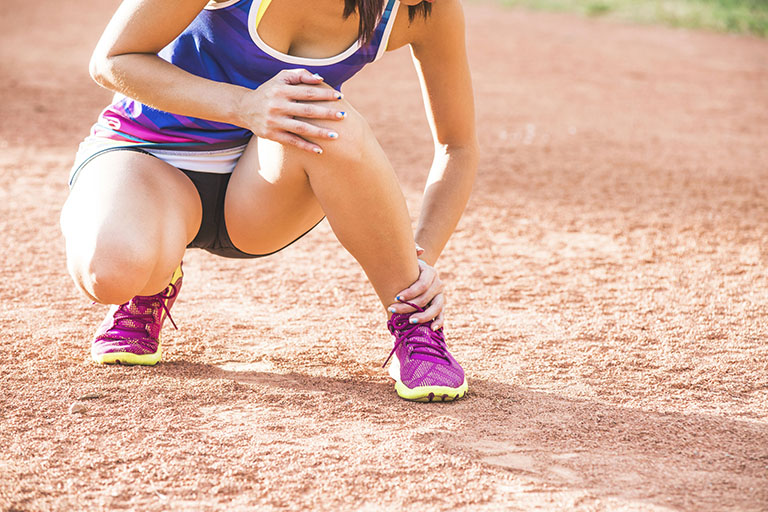
Ankle injuries are one of the most common musculoskeletal injuries and, without rehabilitation and treatment, have a very high recurrence rate. At Collins Place Physio, we use a number of techniques to prevent ankle and foot injuries, but one of our favourite tools is the Ankle Foot maXimizer (AFX).
Here, our Physiotherapist Conor Brennan outlines the many benefits of the AFX.
Recurring ankle injuries can cause a lot of long-term problems, such as chronic ankle instability, damage to the internal cartilage and joint surfaces, and a loss of mobility. A loss of ankle mobility will then place increased load on the knees and hips, causing long-term disability and poor movement patterns throughout the lower limb. After sustaining an ankle/foot injury, it is very important to complete a rehabilitation program and correct any residual instability or mobility issues.
The Ankle Foot maXimizer is a revolutionary new strengthening system that enables you to strengthen all the muscles/tendons of the entire foot and ankle complex. Instead of using resistance bands that constantly slip off your foot or performing monotonous calf raises/balance exercises/using wobbleboards, the AFX anchors around your foot and bungee cords supply constant resistance throughout your entire range of movement. The bungee cords vary in resistance, allowing you to strengthen your ankle from acute stages of injury right through to sport-specific training.
One of the great advantages of using the AFX is that it helps to activate all the intrinsic muscles in your foot, i.e. the small inner muscles that help to maintain your arch and provide stability to your foot and ankle. Another benefit of the AFX is that it enables safe, controlled stretching of the ankle and foot in all directions.
Whether you have sustained an ankle sprain, tendonitis, plantar fasciitis, fracture or are recovering from surgery, the AFX is the ideal strengthening system to return you to full pain-free function. It will ensure you return to the sport you love, decrease your risk of re-injury, and help increase your athletic performance by improving your jumping ability, speed, agility and balance.
Click here to watch a quick demonstration of the AFX system.
If you are interested in the AFX and think that you would benefit from it, please ask one of the Collins Place Physio team about it today.
Posted by Peter Hunt in General on August 29th, 2017
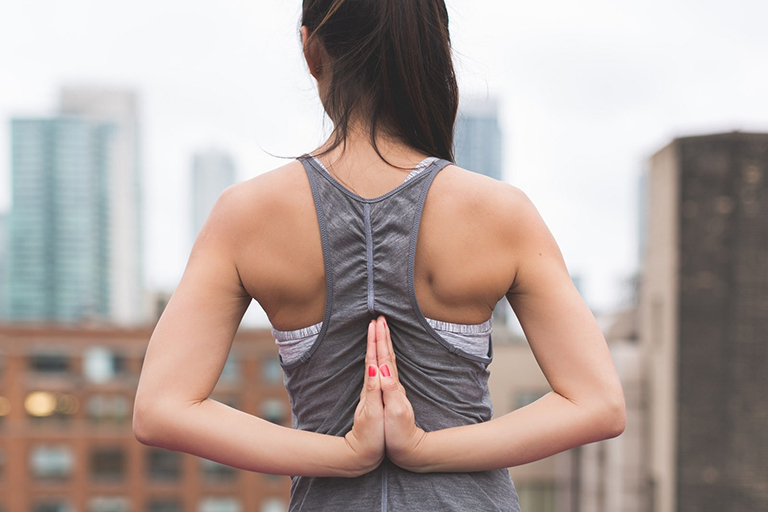
From diet to hormones to mindfulness and fertility, we’ve rounded up 8 excellent women’s health tips from some of the very best doctors, trainers, psychologists and experts in the country. Read now, bookmark, and enjoy your best health ever!
In Chinese medicine, bloating is often a sign that your digestive system is unhappy. It is so common these days to look at food in terms of nutrition content (think superfoods, the raw food revolution etc) but have you thought about how your body will go digesting that food?
Your body has a certain “digestive fire” (known as Spleen Qi and Yang) that fires up to digest your food and extract the nutrients that it can. If your digestion is weak, and this “fire” is diminished, then eating raw and cold foods will only make it harder on your body, causing bloat. Try eating warm and cooked, nourishing foods to support and encourage your digestion to get back on track.
Dr Vivian Tam, Doctor of Traditional Chinese Medicine & Founder of Cosmetic Acupuncture Melbourne
To be mindful of emotions, we need to stand back and notice our feelings without condemning ourselves or struggling. We can learn to observe, without judgement, emotions, thoughts and physical reactions driving our state of mind and behaviours.
If we ignore painful emotions, struggle against these or punish ourselves, we detach and ultimately lose ourselves. We might seek to numb ourselves through drugs, alcohol, shopping eating or busyness. This results in life being harder than necessary and we lose the opportunity to heal through awareness and choose a wise and compassionate way to respond that helps us grow in the longer-term.
Checking in with yourself, practicing meditation, taking time to slow down, talking through a problem, asking for help, practicing kindness and nurturing of ourselves during a hard time and learning some mindfulness skills can help with this.
Carolyn Toon, Psychologist & Director of Axis Clinic
My top tip for women’s health would be that strong is better than skinny. Strength training, through Reformer or any form of resistance training, will improve your core, arms, legs and spine. It will tone and tighten all those little areas we find a little difficult to love about ourselves and it improves our health, wellbeing and fitness overall. Strong is sexy!
Alexandra Grounds, Head Pilates Teacher at Reformation Pilates
Don’t get complacent about your fertility window. Remember that there are lots of options, even if you’re not ready to have a baby immediately. The best time to start thinking and having the conversation is now, and with the right people! It’s important to get a realistic and accurate idea of your options.
Dr Devini Ameratunga, Fertility Specialist and Gynaecologist at Brisbane Gynaecology & IVF
Women can suffer from various hormonal imbalances in their life time such as PMS, PCOS, perimenopause and menopause. Some physical signs associated with these imbalances are fatigue, headache, muscle and joint pain. Massage can help to regulate neurohormones, such as the dopamine and serotonin produced by the nervous system, which works together with the endocrine system and hypothalamus, which are responsible for the production and release of hormones to the reproductive system.
Mariana Stamatopoulos, Remedial Massage Therapist at Collins Place Physio
I recommend that women balance their feminine energy by keeping their hormones in check. Hormone balance incorporates optimal health of mind, body and spirit. With the three in balance, it means that women metabolise food better, do not retain fluid, think clearer, have more physical energy to exercise and generally enjoy their everyday life. A great product available in Australian pharmacies is Oriental Botanicals Women’s Qi.
Ingrid Issa, Nutrition Specialist
Women are four times more likely to develop foot related problems during their lifetime than men. The most prevalent of these problems, such as bunions and neuromas, are often directly linked to incorrectly fitting, non-supportive footwear. When buying shoes, always make sure you consider the materials used (leather is generally preferred), the shape of the shoes (don’t squash those toes!), and security (some sort of fastening to the foot by laces or straps).
Caitlin Topham, Podiatrist, Bared Footwear
Wearing a strap over the same shoulder while carrying a handbag will cause the muscles on that side of your neck to overwork and may cause you to lean to that side which will place extra stress on your spine. Over time this can cause imbalances in your body, cause your muscles to fatigue and contribute to your risk of injury.
In order to minimise the effect of carrying a bag every day, try to clean out your bag every few weeks and change shoulders every 10 minutes or so to spread the load evenly.
Conor Brennan, Physiotherapist at Collins Place Physio
Posted by Peter Hunt in General on August 28th, 2017
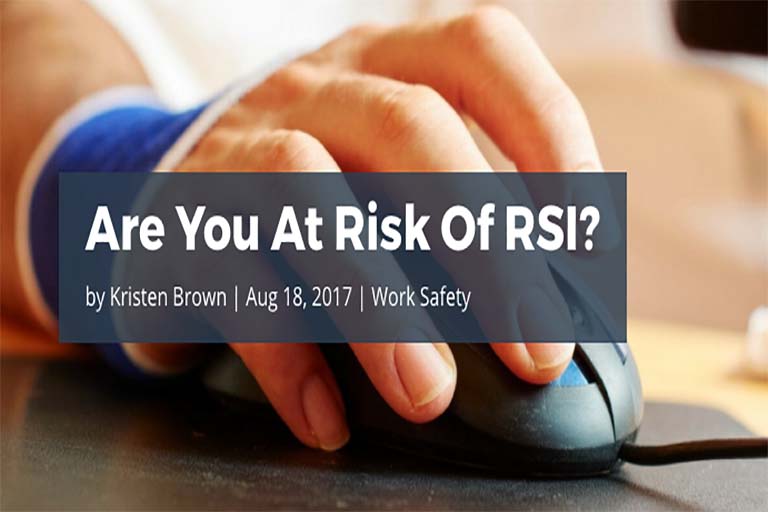
RSI is a common injury we see at Collins Place Physio, particularly among office workers. RSI often involves the thumb, wrist, elbow and forearm, and is usually due to poor posture, poor workstation setup, and increased hours of working at the desk. In other words, repetitive movements in a non-ergonomic environment.
RSI refers to Repetitive Strain Injury – pain or injury from the overuse of muscles and tendons caused by repetitive tasks and movements, usually over a cumulative period of time. RSI can often be associated with performing these tasks in non-ergonomic environments.
We recently chatted with Smith’s Lawyers about all things RSI: cause, prevention and cure. Read all about it here!
Posted by Peter Hunt in General on August 21st, 2017

Collins Place Physio’s Clinical Remedial Massage Therapist, Sana Kurban, has been an integral part of the team for almost 13 years. Sana works closely alongside our physiotherapists to treat postural conditions, headaches, sports injuries and more.
Including from completing my Certificate IV, 15 years. I started with Collins Place Physio straight after finishing my diploma. It’s all in the timing!
I’ve always had people-focused jobs, and have always enjoyed the benefits myself of receiving remedial massage treatments. It seemed a natural choice.
I use deep tissue massage, trigger point, myofascial release, muscle energy techniques, soft tissue release techniques, cupping, dry needling, stretching. I also prescribe exercises to counteract the stresses clients put on their bodies.
I enjoy the variety, and work with what I feel is the best technique for each particular client. I get good results dealing with the postural issues that are commonly presenting in the clinic. In a clinical setting like Collins Place Physio, our massage therapists work in conjunction with the other practitioners, as a team to provide the best overall result for our clients.
Busy, corporate, active, stressed, overworked.
Regular massage can prevent chronic conditions from setting in – the client becomes more aware of what they are doing to add to their discomfort, and learns what they can do to prevent it chronically reoccurring. Massage keeps the body in optimal condition and prevents injury.
Clients come in feeling pain and leave feeling good.
I enjoy it when clients take postural and exercise advice and are able to manage their condition without always relying on a quick fix from me. I like to empower them to take control of their situation.
Eating, cooking, wine, keeping fit, art, reading, family, friends, gardening and enjoying our new house in Northcote!
Book you next remedial massage appointment with Sana here.
Posted by Peter Hunt in General on August 17th, 2017
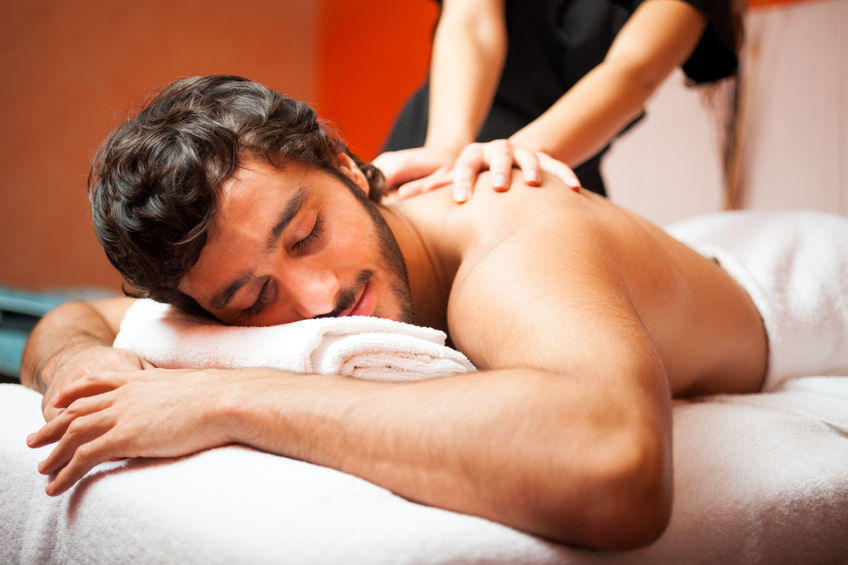
As a remedial massage therapist, I am a firm believer in the importance of regular massage to counterbalance today’s increasingly sedentary lifestyle. The best way to explain this is to compare your body to your car. Regular servicing and tune ups are the easiest way to ensure your vehicle doesn’t conk out altogether. Causing you more expense, and a massive headache, in the long run.
I understand first-hand that sedentary lifestyles are often unavoidable. In my previous job, I’d often find my ears hiked up around my shoulders at the end of a long, desk-bound day. So, even before I changed careers, I was an advocate of regular tune ups. They’re something I still enjoy, and my body definitely sees the benefits of regular remedial massage.
Today, there is a real temptation to spend more time glued to a screen than getting outside and moving our bodies. Obviously, a healthy diet and exercise are both vital to feel great. However, to get the most out of a new exercise or strengthening program, it’s essential to first release any tension or tightness.
Having an understanding of how different parts of the body work in tandem is key to overcoming painful movement patterns. Think about sitting. When you spend long periods of time sitting, at a desk or driving, the hip flexors become short and tight, while the glute muscles ‘switch off’ and become long and weak. When you stand up, your brain finds other muscles to enlist to compensate for the lack of glute activation. When one structure is over working, this automatically affects other structures above and below.
Think now of your upper body. When you’re lugging around a bag or have a phone tucked under your ear your upper traps become overworked and tight, and your lower traps become weak. All of which leads to tightness and discomfort in the shoulders and neck. Over time, these become learned positions, contributing to pain, dysfunction and a reduced range of movement.
Whether you’re in training, suffering from headaches, recovering from surgery or just looking to switch off and pamper yourself, massage is a great way to relieve tension and discomfort. At Collins Place Physio, I take a holistic approach to treating clients and use treatment methods tailored to individual needs.
I encourage you to book a remedial massage in our Melbourne CBD physio clinic today, and start experiencing the many benefits of a regular tune up! I look forward to welcoming you in the clinic.
Mariana Stamatopoulos,
Remedial Massage Therapist, Collins Place Physio
Posted by Peter Hunt in General on August 7th, 2017
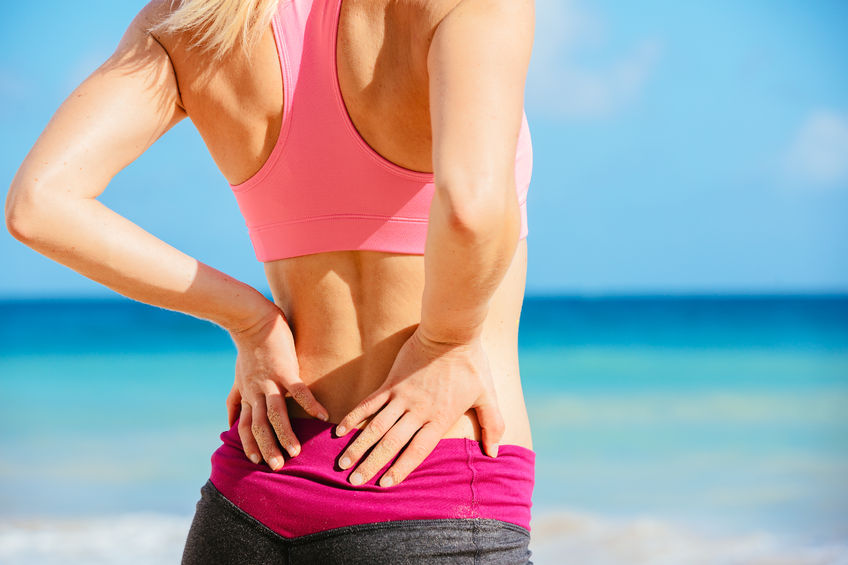
Whether you’re desk bound or a manual worker, lower back pain is a serious hassle. It’s an extremely common complaint we see here at Collins Place Physio, but the truth is it’s often avoidable. So, rather than waiting until it sets in and reaching for the painkillers, try these eight easy ways to prevent lower back pain.
Core strength is incredibly important when it comes to avoiding lower back pain. “Think of your core like a corset that surrounds your body. It refers to the deepest layer of muscles underneath your visible abs that attaches to your spine. It provides stability and support to your spine when you are static and when you are moving,” says Collins Place Physio’s Jane Lau.
“A strong and stable core (imagine a tight corset) provides a good foundation for every movement we make. If your core is weak, your movement becomes less efficient, causing overloading on other parts of your body, which may lead to pain and injury.”
Pilates, with its focus on controlled movements and core stability, is an excellent practice to reduce the likelihood of lower back pain. And improve your flexibility, balance and so much more! (Make sure you check out our core strengthening video at the end of this post!)
When it comes to back pain, poor posture is a major culprit. “Poor posture means that our muscles are working harder to keep us upright and balanced,” says Jane. “Over time, this can cause tightness in muscles, and wear and tear on muscles, ligaments and joints, causing pain and injury.”
Not sure where you’re going wrong? A postural analysis appointment at Collins Place Physio will pinpoint your problem areas. Book an appointment with Jane today.
Sitting all day puts a huge amount of strain on the lower back, with many experts likening its negative effects to that of smoking! In fact, sitting places 40% more strain on the spine than standing. So, get up, stretch, and move around as much as possible throughout the day!
Lobby HR for a sit-stand desk, which allows you to regularly change your position. You’ll enjoy a healthier back, and your boss will benefit from a more productive workforce with fewer sick days.
Some sitting is unavoidable, so a good ergonomic chair is a must. According to Jane, this should have lumbar support, adjustable height, seat slide and seat tilt. If your chair is not supportive, she suggests rolling a towel and placing at the base of your spine to reduce lower back strain.
And how exactly should you sit? “Your lower back should be in contact with the lumbar support, your back straight, shoulders back and feet flat on the ground, with hips at 90 degrees or more. There should be two-three fingers’ width between the back of the knees and edge of your seat,” advises Jane.
Learning how to lift things correctly is essential to avoid unnecessary back pain and injury. “Engage your core, squat, bend from the hips – not lower back – and push through the hips and knees, keeping your back straight and the object close to your body,” says Jane. If you can’t maintain good lifting technique, it’s a sign the object is too heavy for you!
Bed sagging in the middle? It’s time to fork out for a new mattress. According to Jane, a bed that’s too soft means the body sags into a poor posture. A good mattress should take the pressure off your shoulders and hips, while allowing you to keep good spinal alignment. (Talk to a member of the CPP team about sourcing a suitable bed at a discount.)
To keep your lower back happy, Jane suggests a side sleeper should try sleeping with a pillow between the knees, and a back sleeper might benefit from a pillow under the knees.
Sorry to nag, but carrying around a spare tire puts extra strain on your lower back. It’s probably time to up your exercise and clean up your diet if your weight is creeping into the danger zone.
Dry needling uses ultra-fine needles to painlessly stimulate trigger points, and muscular and connective tissues within the body. It can help increase bloody flow and improve mobility, promote healing, and release muscle tension. It is a useful treatment to nip any lower back issues in the bud before they escalate, and also useful to manage chronic musculoskeletal conditions.
Back pain not an issue? Check out our blog on 8 Ways to Prevent Neck Pain.
Posted by Peter Hunt in General on July 6th, 2017

With many of our clients CBD-based office workers, we see and treat A LOT of neck pain and headaches at Collins Place Physio. And while computers might be a curse, we’re here to tell you there ARE some ways to prevent neck pain.
People with sedentary jobs who sit in front of a computer screen all day are at risk of developing neck pain. This is usually due to poor posture where their spine becomes rounded, and the head starts to protrude forwards. “For every inch that the head comes forward, an additional 10lbs of load is placed on the supporting muscles and joints,” says Collins Place Physio’s Conor Brennan.
What’s more “Repetitive turning to one side (if working off two screens) or looking down/to the side when reading documents places extra load on the discs and facet joints in your neck. The muscles in the neck compensate for these poor positions and become overactive, eventually causing pain and muscle spasm.”
Read on for Conor’s top tactics for preventing neck pain!
Moving regularly is crucial to prevent neck pain. Get up from your desk at least every 30 minutes. Set an alarm on your phone, walk to the water fountain or printer. This helps to reset your posture.
Use standing desks if your office has them. You’re able to maintain much better spinal alignment when standing, and this puts much less stress on your neck and back muscles.
Having your computer set up correctly for your body type is very important. The top of the screen should be two inches above eye level and roughly at arms-length away from you. Your lower back should have good support from the backrest, your knees should be just below the level of your hips and your feet firmly on the ground.
If possible, ask for an ergonomic assessment at work*. This will ensure you minimise any stress on your spine when sitting at your workstation.
If you’re struggling to read the text on the screen and find yourself leaning forwards and straining your neck, consult your optometrist.
To prevent neck pain, it’s important to strengthen the muscles that help support your head. This will help improve your posture and prevent extra strain on your neck muscles. Simple activation exercises like the below can help the bigger muscles relax.
Chin tucks: Sitting up straight, with shoulders back pull your chin in towards your throat (as if making a double chin) and then return to your resting position. Repeat this 10 times every hour you are sitting down.
Shoulder blade squeeze: Sitting up tall with chin tucked in and hands resting on thighs, stick chest out and squeeze shoulder blades together. Hold for 3 seconds and relax to resting position, repeat 20 times.
If you spend a lot of time using paper documents, you need a document holder. Preferably an in-line document holder that can be placed in between the keyboard and screen. This will help you to maintain a better spine angle and stop you from repetitively looking down and rotating.
Each evening lay on a foam roller (lengthways down your spine) or a rolled-up bath towel. Spread your arms out to the side and let your shoulder blades relax back onto the ground. Lay there for up to 5 mins. This is a great exercise to open up your shoulders and stop you becoming rounded in your upper back and shoulders.
Sleeping on your back with a small pillow is the best position for your neck. However it’s always possible as you’ll move around in your sleep and revert back to the position you find most comfortable. If you prefer sleeping on your side, use one medium-sized pillow. Get your partner to check that your neck has adequate support so that it’s in a neutral position. Play around with the height of the pillow until you find one that works for you.
It is very important to set up your seat and mirrors properly to avoid neck pain. Have the seat upright with a slight incline and close enough to the steering wheel so that you’re not reaching forwards. Sit up tall with your shoulders back and your chin tucked in. In this position, fix your mirrors exactly to that position. Every time you start to slouch, it’s a great cue to correct your posture!
*Collins Place Physio provides ergonomic assessments. Ask to speak to our work station guru, Jane Lau!
Posted by Peter Hunt in General on July 5th, 2017

University of Melbourne grad, Jane Lau is Collins Place Physio’s tri-lingual ergonomics enthusiast. A member of the team since 2013, she is skilled in postural analysis and highly adept at resolving desk job injuries. Yes, there’s such a thing!
I wanted to work in the health industry and specifically wanted to have more involvement with people holistically, educationally and more long term. I believe Physiotherapy gives me a good opportunity to do that.
I enjoy working through all injuries, but as of late, I’ve developed more interest in postural related/desk job injuries. So, that’s lots of necks, backs, forearms, shoulders.
Every day I get to help someone function better, feel better and reach their functional goals – that’s a highlight in itself.
I love being able to meet different people and being a part of their journey as a whole person, not just their injury.
When you’re not putting unnecessary stress on your body, you function more efficiently and that makes you feel good about yourself physically, mentally and emotionally.
Keep moving.
Running a business/working in corporate leadership roles and investing my resources into social issues I’m passionate about. Or I’d probably be doing something food/travel related on the side.
You gotta help yourself too. Do your exercises, listen to your body and be patient!
Volunteer at church, eat, drink, cook, exercise, explore, travel.
I speak three languages + one dialect, and I can probably still hit a decent drive on the golf course.
Roger Federer?
Nope. I’m staying put, cooking more, eating more junk, exercising less, but thoroughly enjoying the cold.
Book your next appointment with Jane here.
Posted by Peter Hunt in General on June 9th, 2017
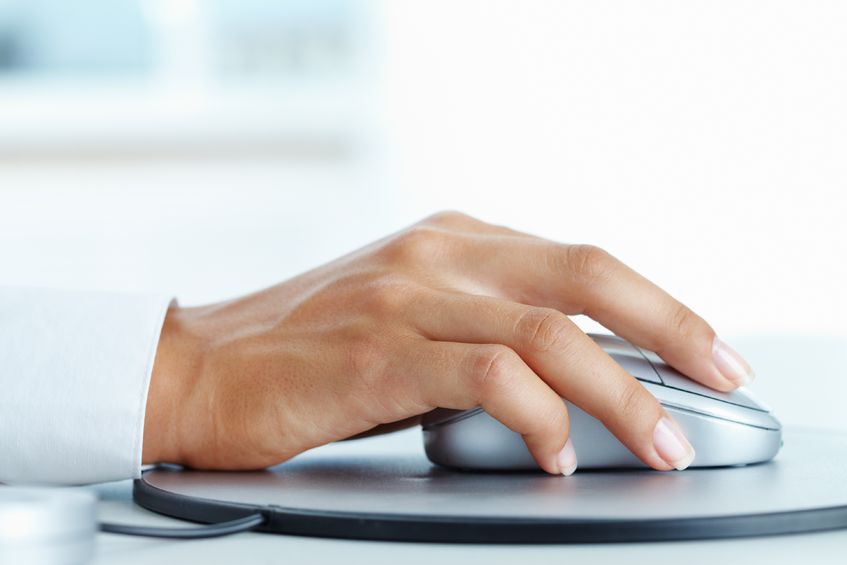
Here at Collins Place Physio, we see a lot of office workers unnecessarily suffering from hand, wrist or shoulder pain. The culprit? Often, it’s a poorly designed or over-used mouse. An ergonomic mouse is the answer, and an essential purchase for anyone who regularly works with computers!
To help make your purchase decision easier, CPP Physiotherapist and ergonomics guru Jane Lau has shared her insights into seven great alternative mouse options. Say hello ergonomic mouse, goodbye RSI!
Eliminating forearm twisting, this vertical mouse is worth a try if you suffer from wrist / neck / shoulder / forearm issues.
Why use it? The placement of the thumb scoop allows the user to achieve a relaxed handshake position grip as there is no predetermined thumb position. It’s easy to adapt to, and available in both right and left hand options. However, it is generally a better fit for smaller hands.
Anyone with wrist / neck / shoulder / forearm issues could benefit from trying the Evoluent upright mouse.
Why use it? The hand maintains a comfortable upright neutral position. An extra wide lip along the bottom edge prevents the last finger from rubbing on the desk. It is also easy to adapt to, with left and right hand versions. This ergonomic mouse is bigger than a standard mouse, so it tends to be a good fit for larger hands.
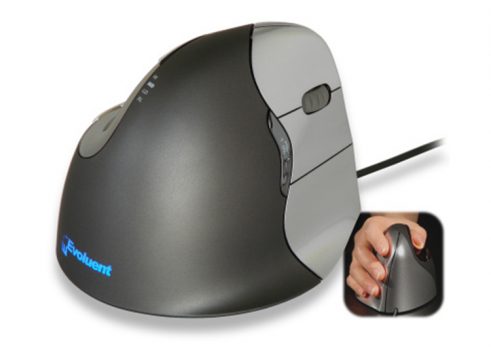
The Penguin is an ergonomic mouse that resembles – you guessed it – a penguin, and is a vertical option that may ease and prevent wrist, shoulder and forearm troubles.
Why use it? As a vertical, ambidextrous mouse, the Penguin allows you to regularly switch hands throughout the day and share the workload. This helps prevent muscle strain and pain.
This adjustable mouse has different settings that can help address wrist and forearm issues.
Why use it? The Oyster is an adjustable, ambidextrous ergonomic mouse that tailors to individual requirements thanks to five different angled settings. It can be used wired or wireless and comes in standard and large sizing for a perfect fit.
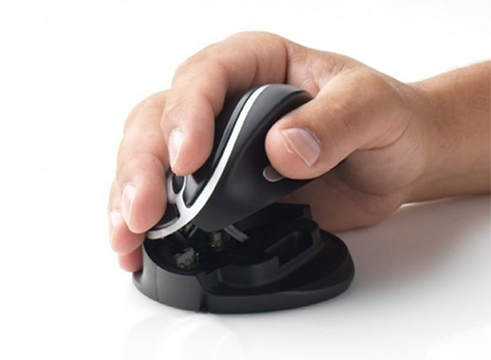
A little like a computer game control in appearance, the Handshake Mouse can help ease and prevent neck / shoulder / forearm / wrist issues, particularly carpal tunnel syndrome and repetitive stress injury (RSI).
Why use it? This mouse places your hand and forearm in a more ergonomic Handshake / neutral position. One big benefit is that it comes in two sizes so is suitable for everyone. However, the position is quite foreign for many and may take some getting used to.
This two-handed mouse eliminates strain from gripping and unnecessary movements, and is suitable for those with neck/ shoulder / forearm / wrist / hand issues.
Why use it? Everything is close to the body, so you don’t need to reach for your mouse. It’s quite unique, so allow some time to adapt to this ergonomic mouse.
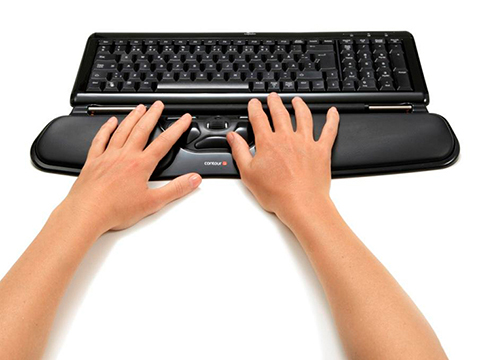
This sleek mouse is contoured to fit the hand like a glove, and can help with neck / shoulder / wrist / hand issues.
Why use it? The HandShoe reduces gripping, pinching and hovering of the fingers above the buttons, which are potential causes of RSI and carpal tunnel. However, the hand is not entirely neutral in position.
Adds Jane, “anyone with any hand / wrist / forearm / shoulder issues should be trialling some form of ergonomic mouse. There really isn’t a one size fits all approach, and it still comes down to personal preference and trialling the product. But the above options are a good place to start your ergonomic mouse hunt.”
Collins Place Physio stocks a selection of ergonomic equipment. Please have a chat with our team about which mouse would best suit you, or to organise a trial!
Posted by Peter Hunt in General on April 27th, 2017
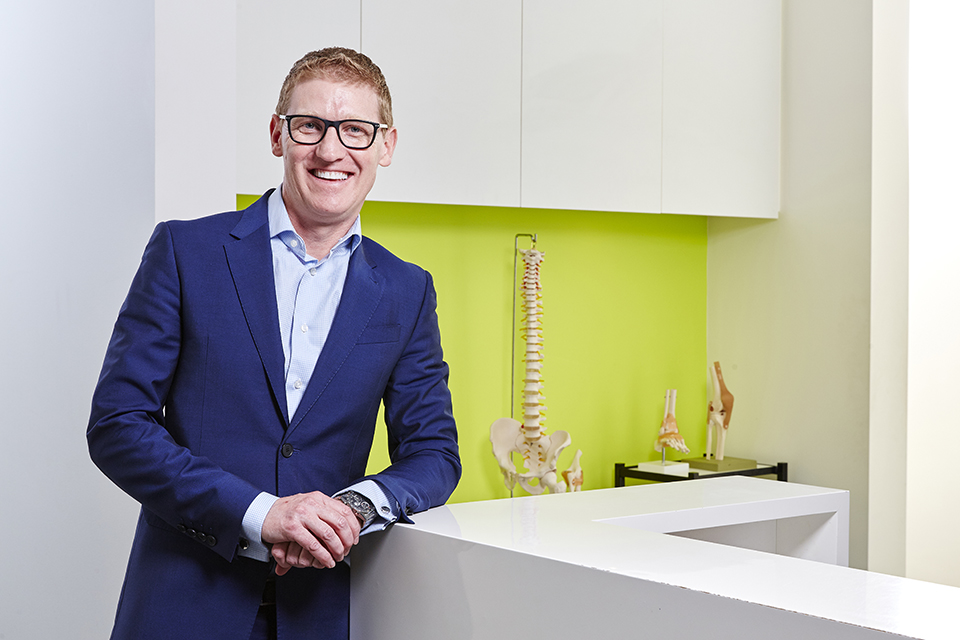
Collins Place Physio Director Pete Hunt travelled the world as a sports physiotherapist before settling down in our Melbourne CBD clinic. Here he chats posture, patience and his latest Netflix binge.
I’d always been interested in health and sport and believed Physiotherapy gave me a great opportunity to combine both.
Diagnosis and treatment of Musculoskeletal injury is the area that I am most passionate about.
It’s afforded me a great lifestyle, both working in clinics and traveling with sporting teams.
Do your exercises and understand that sometimes the human body takes time to heal.
Being a CBD-based clinic we see a great deal of postural syndromes caused by prolonged computer use, typically at poorly designed or fitted workstations. Alternating sitting and standing is crucial, hence why we stock sit-stand desks. I’ve always said that even a person with the best sitting posture will fatigue after a certain time.
I was team Physiotherapist for the Australian judo team. I was lucky enough to work with some amazing athletes and travel the world on training camps. Attending the Judo World Championships in Rio was a definite highlight!
I spend as much time as I can with my gorgeous daughter Jazz, and try to experience all this amazing city has to offer. We’re very lucky to work where we do with the incredible array of restaurants, cafes and bars at our doorstep.
On the back of watching Narcos on Netflix, I’ve been reading Escobar.
PhysiApp which is a fantastic exercise prescription app we utilise for our patients. And I wouldn’t be a Melbourne boy if I didn’t have a look at the AFL Live app each week!
Book your next appointment with Pete here.
Posted by Peter Hunt in General on April 19th, 2017

Suffer from a crook neck, headaches or a bad back? The trigger could be lurking in your home! These seven everyday items look innocent enough, but they might just be responsible for your pain. So, how many do you use each day?
There’s a reason physios are mad about backpacks. Slinging a heavy bag over one shoulder isn’t really doing you or your posture any favours. In fact, it could be the cause of your neck and back pain, as well as those pesky headaches.
How so? Lugging a heavy shoulder bag causes a downwards tilt of the shoulder. To prevent the bag from falling, we then lift that shoulder, causing overuse of the neck and shoulder muscles. This can put stress on the neck and upper back, leading to pain and, oftentimes, headaches.
If a cross-body bag’s your go-to, make sure the straps are adjusted so the bag sits close to the body and not too low past the hips. This allows the weight to be distributed evenly across the chest and back. And as for those backpacks? Keep the straps short so the bag sits snugly against the lower back. If it’s too low, you’ll hunch forward to compensate the backwards force.
Grocery bags aren’t entirely innocent either, and carrying too much weight can overwork the tendons of the shoulder, elbow, wrist and hand. To shop smart, always try and carry similar sized and weighted loads in both hands. And DO make use of a shopping centre trolley, rather than struggling to the car with your load.
No car? No problem. A pull trolley is an excellent way to transport your weekly shop!
Our increasing reliance on our smartphones is great news for Apple and Samsung, but terrible news for our bodies. To hold our phones, we raise our shoulder, lower our ear and tilt our head at an unnatural angle. Which causes – you guessed it – neck pain. (Hint: use ear phones whenever possible to prevent strain).
Physios are also seeing an increase in phone-related injuries to the tendons and joints in the hand and arm. These are caused by repetitive fine motor movements, such as texting. It’s not just an adult problem, either. These types of injuries are a growing problem for kids and teens, who often spend hours playing games or on social media.
It might seem a stretch to blame a book for your neck pain. But it’s not. Many people read in bed – whether that be a good old fashioned book, or from their iPad or eReader – which encourages a forward head posture and downward head tilt. With gravity acting to drag your head down, you’ll have to work harder through the neck and shoulder muscles to hold your head high enough to continue reading. This causes overloading through the muscles, and neck pain and headaches.
You’ve probably heard this one before! Wearing high heels regularly (3+ times per week) is one of the biggest causes of foot and ankle pain in women. High heels are problematic for numerous reasons: they put an increased load on the knee joint and can lead to osteoarthritis; they can overload the lumbar spine and cause back injury; and they can even give you bunions. But that doesn’t mean you have to give them up! Check out some handy tips on reducing foot pain from high heels.
On the flip side, flip flops aren’t that great either. Regular rubber thongs are flat with zero arch support, which is particularly problematic for those with increased pronation (inwards foot roll). We typically claw our toes to keep our thongs in place, which can result in damage to the ligaments and joints of the feet, and the flat heel can also play havoc with the Achilles.
(Thankfully, an answer is at hand.)
They may be part of your daily uniform, but you should probably rethink any jeans that require a coat hanger to shoe-horn yourself into. Ultra-skinny jeans can squeeze the nerves in your groin and legs, and alter the sensation in the legs. Be on the lookout for pins and needles or numbness.
Posted by Peter Hunt in General on April 6th, 2017

To help you get to know us, we’re turning the spotlight on the Collins Place Physio team. First up, Irishman and sports enthusiast, Conor Brennan. Conor joined the team in August 2013, following a five-year stint in NZ, and is our go-to guy for acute sporting injuries.
I always had a huge interest in sports and played everything and anything growing up. After having a few injuries myself and spending time on different physios’ tables, I was intrigued to learn more about how the body works.
Sports has always been an area of keen interest for me, so I love all that side of it. Also, I have had a lot of shoulder problems myself and had a reconstruction in 2012, so this is an area I know lots about and enjoy treating. Above all else, I love variety and enjoy treating all types of injuries from the young, fit and sporty, to the weekend warriors or older more sedentary individuals.
LOL. Do your exercises. Most patients will get to the pain-free stage and then stop the rehabilitation program. You need to strengthen the area to help correct the underlying imbalance/mobility issue, otherwise the symptoms will slowly come back or you are in danger of doing more damage.
In my spare time I play a lot of sport. I have just started back playing Hurling (it’s a traditional Irish game, played with wooden sticks and a ball. It’s a mixture of Hockey and Lacrosse and it’s the best sport in the world!) I also play touch rugby and AFL 9’s during the week, and try to get to the gym regularly. I also love snowboarding, rugby, soccer and golf, this list goes on…
At the weekends, you’ll find me catching up with friends, socialising with a few cold beers, exploring Melbourne… there are so many greats bars and restaurants to try. I love live music and music festivals and regularly go to different gigs around the city. I love travelling and need to see more of Victoria. I try and go camping regularly and get out of the city to clear the head.
It was amazing! I was in Brazil and Argentina seven years ago and loved it. In October a good friend of mine was getting married in Brazil so that was a no-brainer. I had two weeks in Brazil – one week in Rio and then a week in Florianopolis for the wedding. Florianopolis is where all the Brazilians go for holidays and to party and it is just simply paradise.
After Brazil, I went to Colombia for two weeks. I went to Bogota, Cartagena, Santa Marta, Medillin and I also spent two days in the mountains two hours outside Medellin.
Probably some of the street food in Colombia. I had fried ants which were surprisingly not too bad, but I didn’t try the Cuy (guinea-pig), even though all the locals recommended it.
Book your next appointment with Conor here.
Posted by Peter Hunt in General on March 20th, 2017
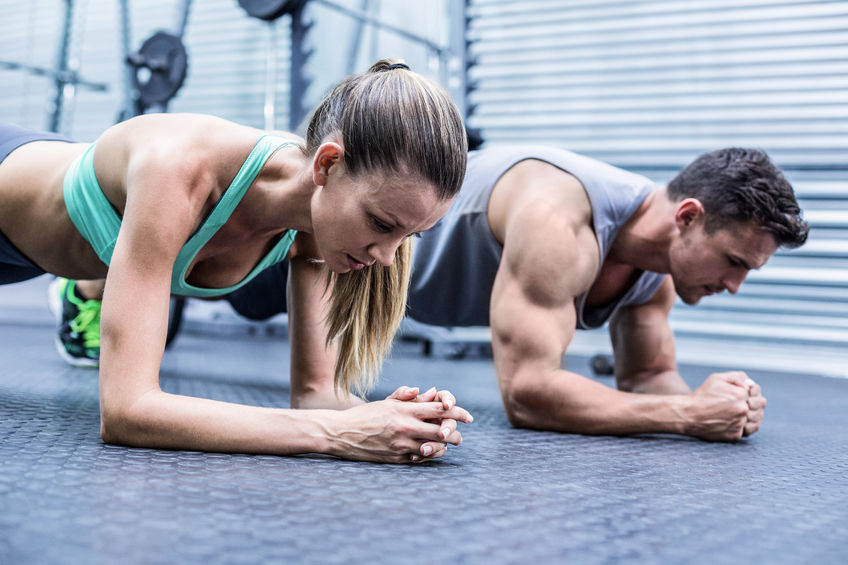
Whether you’re an elite athlete or a desk jockey, the Functional Movement Screen at our Melbourne CBD physio clinic can help prevent your next injury. Developed in 1995 for US college athletes, the Functional Movement Screen (FMS) is now used with much success by physiotherapists in Melbourne and across the globe. Highly regarded in the professional sporting world, the FMS is also used by the likes of the NFL and US gymnastics team.
At Collins Place Physio, we use the FMS in conjunction with the Y Balance test to give active patients a thorough biomechanical assessment – identifying any asymmetries and inefficient movement patterns that may contribute to injury. This then allows our physiotherapists to develop a corrective exercise program to address your problem areas before pain and injury occur.
The most popular Musculoskeletal screening tool, the FMS assesses seven core movement patterns. Each joint in the body is assessed for mobility and stability during the quick and easy screening. At the end of your assessment, a total score is given out of 21 (each test is scored 0 – 3, where 0 indicates pain, 1 means the movement cannot be completed, 2 means the movement is performed with some compensation, and 3 equals efficient movement). 14 or less indicates increased injury risk.
The Y Balance is used in conjunction with the FMS as part of the full musculoskeletal screen at Collins Place Physio. The Y Balance is an easy way to test how the upper and lower extremity function with the core under bodyweight loads. It’s been shown to be highly effective in measuring function pre- and post-injury rehabilitation, dynamic balance for fitness programs, and when an athlete is ready to return to sport.
According to research, those who achieve low scores on either (or both) the FMS and Y Balance are four times more likely to suffer from a sporting injury.
Collins Place Physio’s Jane Lau and Conor Brennan are highly skilled in biomechanical assessment. They use the Functional Movement Screen and Y Balance tests in conjunction on active patients of all ages. Says Conor, “The screening is perfect for anyone who has had repetitive injuries on one side of their body, someone who has had recurrent muscle strains, before/after surgery, pre- and post-season, or for anyone who is thinking about getting back into exercise after a sedentary period.
“The screening itself takes 30 minutes where I put you through all the different tests and take notes and pictures. I will give the person a few mobility exercises to work on and then a week later will have the follow up session. In this I will have a handout with pictures explaining the results of the screen and the plan of action to restore normal movement patterns and minimise injury risk.”
Book in for the Functional Movement Screen at Collins Place Physio today. And check out our post on some of the more unexpected benefits of massage!
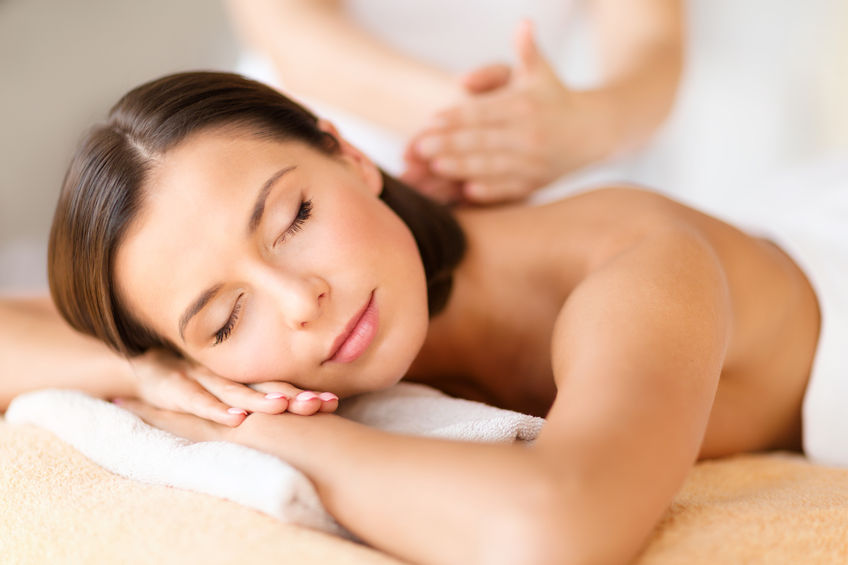
Regular massage might seem like a luxury, but here at Collins Place Physio, we believe it’s an important tool for functioning at your very best. We offer remedial massage to reduce pain and muscular tension, and support the body’s repair process. But that’s not all massage does! Here are seven benefits of massage that you might not know about.
The health benefits of sufficient sleep are well documented – think enhanced energy, concentration and mood – while sleep deprivation is considered risky business. Thankfully, massage has been shown to help manage insomnia and other sleep disorders by increasing those all-important serotonin levels.
Catch every bug that’s going round? Remedial Massage Therapist Mariana Stamatopoulos recommends hitting the massage table, especially as we approach a change in seasons. Why? “Massage stimulates your lymphatic system, which can help boost your immunity,” she says.
If you want to sharpen up, massage can help beat the brain fog! As well as relaxing the mind and body, massage has been shown to improve mental alertness and concentration.
Massage is also beneficial for those struggling with anxiety or depression. It can offer some sweet relief by reducing the stress hormone, cortisol, while increasing serotonin and dopamine. A Prevention article reveals, “A review of more than a dozen massage studies conducted by the Touch Research Institute at the University of Miami School of Medicine concludes that massage therapy relieves depression and anxiety by affecting the body’s biochemistry. In a series of studies including about 500 men, women, and children with depression or stress problems, researchers measured the stress hormone cortisol in participants before and immediately after massage and found that the therapy lowered levels by up to 53%.”
By improving circulation and reducing muscle tightness, massage increases your range of motion. Not only will you feel great as you’re able to move more freely, you’ll also significantly reduce your chances of injury.
A poorly designed work station plus endless hours of screen time can send you reaching for the Nurofen! Massage is a natural way to relieve the neck, back and shoulder tightness that frequently causes headaches.
We’re busier than ever, so it’s important we take some time to manage stress. Various studies have shown relaxation massage to be useful in reducing stress-related hypertension (high blood pressure).
Collins Place Physio is your one-stop shop for physiotherapy and remedial massage in Melbourne CBD. BOOK YOUR NEXT MASSAGE APPOINTMENT with us now!
NB: Always tell your massage therapist about any pre-existing health conditions, as some techniques may be more suitable than others.
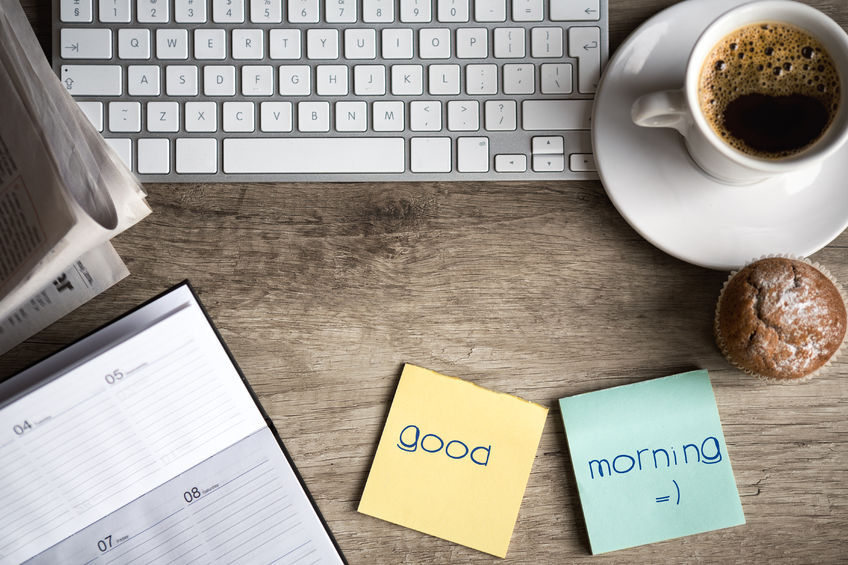
The new year is the perfect time to ditch bad habits and start afresh. And that includes in the workplace. If you spent most of 2016 suffering from a stiff neck, back pain or headaches, it’s time to reassess the way you work. Here are five healthy desk habits we recommend at Collins Place Physio for a pain-free and productive 2017.
Need to speak to Joe in accounts? Don’t just be lazy and send an email. The fact is we’re not built for sitting for hours on end staring at a screen. Our bodies (and eyes) need regular breaks, so get up and stretch your legs at least once every 30 minutes. Go for a quick walk at lunchtime, even if it’s only around the block. And take the stairs instead of the lift every now and then.
If you want to be even kinder to your body, add a few easy stretches into your work day. Here are three to try, best repeated every half hour. 1) Sit on your left hand with the palm facing the ceiling. Using your right hand, pull your right ear to your right shoulder. You should feel a nice stretch from the top of your neck down to the top of your shoulder on the left hand side. Repeat on the right. 2) Remain seated on your left hand as per first exercise. Turn 45 degrees to the right and look at your right armpit. Using your right hand, pull your head down closer to your armpit. 3) Supporting your head with your palms, arch over the back of your chair.
Suffer from lower back pain? Try this simple and effective tip. Roll up a towel and place it in the small of your back. This will give you more support through your lower back, and reduce discomfort caused by sitting.
At our Physio clinic in Melbourne CBD, we work with a lot of desk jockeys, many of whom work long hours. Therefore, one of our main areas of expertise is ergonomics. Try the following simple changes to improve your work station set up:
Collins Place Physio provides comprehensive ergonomics assessments and stocks a wide variety of equipment. Talk to our friendly team about your workplace or home office.
We are huge proponents of sit-stand desks at Collins Place Physio! These clever desks allow the user to move from a seated to standing position frequently throughout the day. At around $1000, they are a lot cheaper than they have been in the past, and the long-time benefits pay off, and not just for workers. Employers will benefit from a happier, healthier and more productive staff, with fewer sick days.
Collins Place Physio stocks electric Sit2stand desks. Talk to us about how a sit-stand desk can help you today!

Thongs are an Aussie staple; the perfect breezy footwear to take us from beach to BBQ. But ask any physio from Melbourne to Maroochydore and they’ll not exactly be singing the praises of this flimsy footwear…
So, at Collins Place Physio, we’re delighted be offering a healthier alternative this summer! Enter Archies Arch Support Thongs – physiotherapist-developed orthotic thongs that love your feet, thanks to some subtle(!) but effective arch support. The phrase ‘orthotic thongs’ isn’t sexy, but you seriously wouldn’t be able to distinguish Archies from Havaianas in a line up. Only your feet will know the difference!
Firstly, they’re flat and offer no support. This is especially problematic for those with increased pronation. When the foot (and subsequently the lower leg) rolls inwards, it alters the way stress and strain are absorbed through the body, potentially causing injury.
Thongs can cause issues for high arches. People with high arches typically take increased stress on the outside of the foot and leg, which can cause injury over time. Arch support helps to more evenly distribute the load across the foot.
The strap is loose. When you walk, your toes are supposed to bend upwards, which activates the arch of the foot. However, most typical thongs have a very loose strap which means you’ll claw your toes to keep your shoes on. The arch therefore doesn’t activate and the foot comes under increased stress, which may lead to damage to the ligaments and joints.
And a flat heel. This can put a lot of stress and strain on the calf and Achilles, causing issues such as Achilles tendinopathy.
They’re banned. Many elite sports teams which have actually banned their athletes from wearing flat thongs!
Archies Arch Support Thongs are stylish, uber-comfortable orthotic thongs designed by a young Melbourne physio who got tired of nagging clients about flat thongs. Archies address the issues above with a patented orthotic design in a soft, non-irritating foam (no rubber or latex). Available in six colours, Archies are guaranteed to be the comfiest thongs you’ve ever worn!
Also ideal for indoors, they cushion the feet against hard floorboards and tiles. We recommend them to clients with plantar fasciitis, too, to support and protect the arch while it’s healing.
Archies Arch Support Thongs are available at Collins Place Physiotherapy for $40 and make the perfect gift-to-self this Christmas! Ask our team to show you the correct fit for your new favourite thongs.

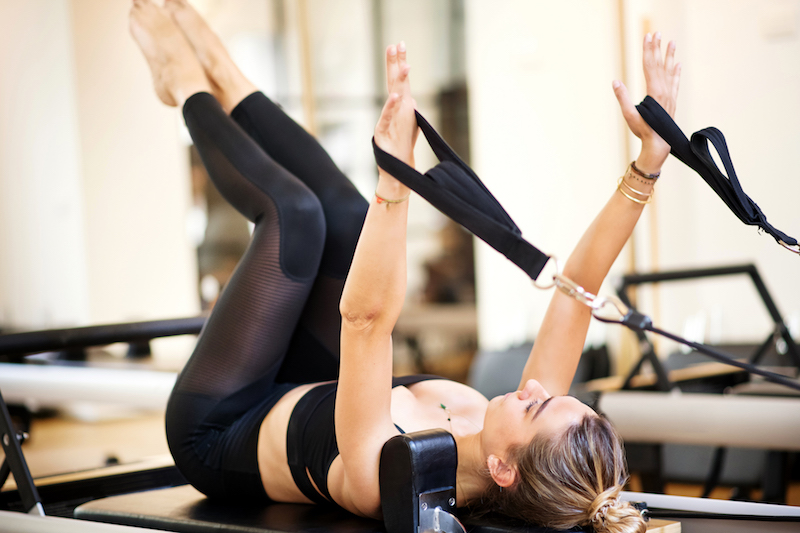
Whether you’re a Pilates devotee or brand new to the practice, you’ll gain a lot from Pilates classes at The Alignment …
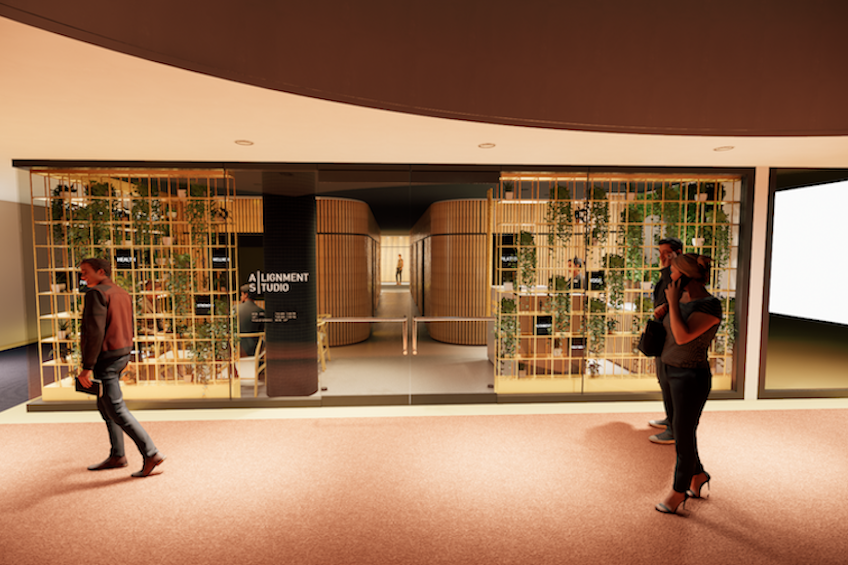
If we’ve seemed distracted the past few months, it’s because we’ve been working on a little something that’s actually kind …
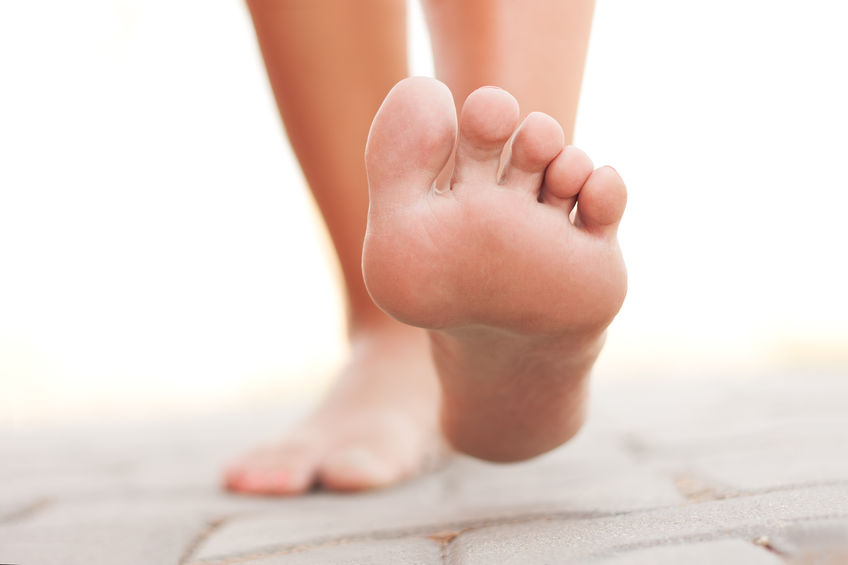
Maintaining healthy, happy feet is extremely important—after all, you’re on them for much of the day! Without foot comfort, your …